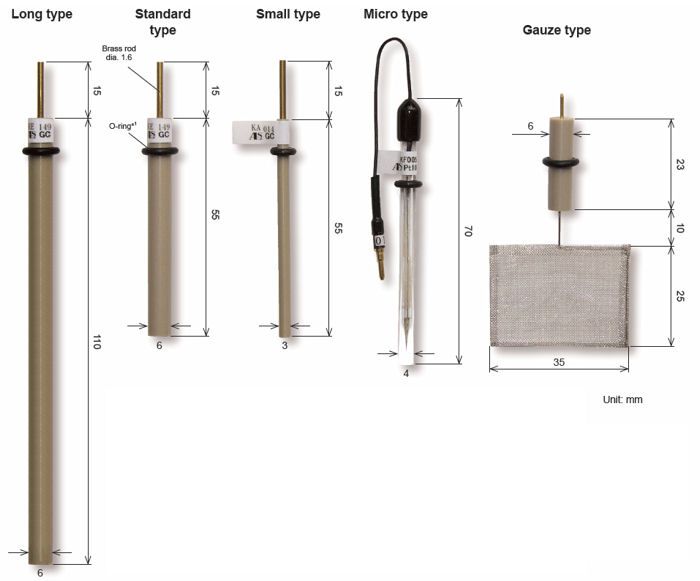TOP > Technical note > Working Electrode varieties features and shapes

Varieties, Features and Shapes of Working electrodes

Standard type: The most standard electrode. It could be used in SVC-2,SVC-3, and VC-4 voltammetry cells.∗2
Long type: PEEK body of 110 mm.
Small type: OD:3 mm, for measurement of the small volume sample.
Micro electrode: High speed scan and determination of the diffusion coefficient.
Gauze type: Apply for bulk electrolysis and as a counter electrode.
∗1 O-ring, one is attached in the electrode. The O-ring is available separately, 002247 O-ring for CV electrode(10 pcs).
∗2 For OD: 10 mm working electrode, the SVC-2 in a VC-5 mode is recommended.
| Variety of Working Electrodes | Features and Applications |
| Platinum electrode (PTE) |
Conventional electrode, which has hydrogen adsorptive wave, used for H2O2 and oxides detection |
| Gold electrode (AUE) |
Conventional electrode, which has no hydrogen adsorption wave, used for thiols detection |
| Glassy carbon electrode (GCE) |
Chemically stable electrode despite its relatively large over-potentials of oxygen and hydrogen evolutions |
| Silver electrode (AGE) |
For cyanide and sulfide detection |
| Carbon paste electrode (CPE) |
Mixed with enzyme etc. to make modified electrodes |
| Nickel electrode (NIE) |
Chemically modified to detect amino acids |
| Palladium electrode (PDE) |
Used to study the process of adsorption and desorption of hydrogen |
| Plastic formed carbon electrode (PFCE) |
Its highly-oriented graphite edge is exposed to the surface with cost effective, similar feature of HOPG |

